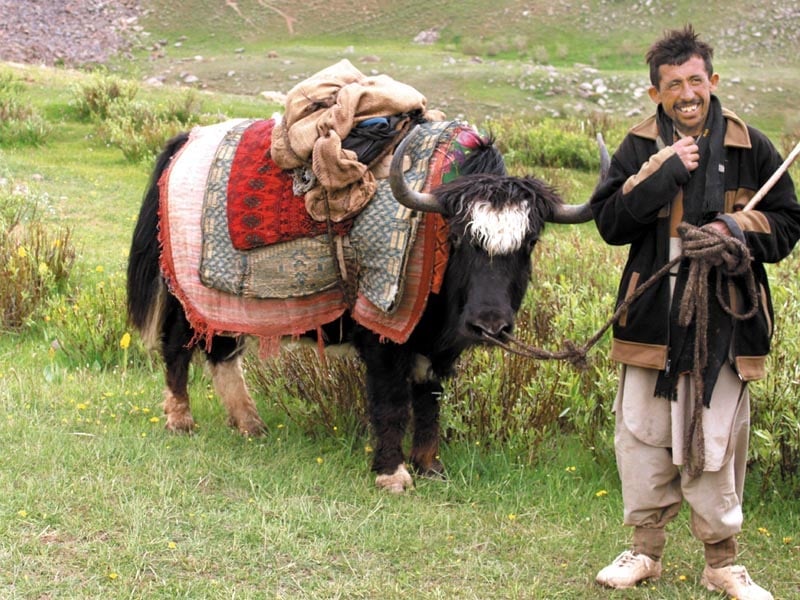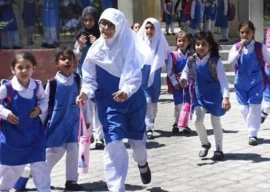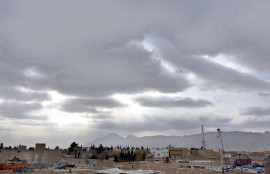
I am the language of absolute faith, I was Shepherd, I am Shepherd
- Nazir Ahmad Bulbul
In a far-flung corner of the world, where the tides of the Tethys Sea once ebbed and flowed, the Himalayas, Pamir and Karakoram mountains now jostle each other for elbow room: tilting, sliding, slipping and grinding along the vague borders of Afghanistan, China, India, Tajikistan and Pakistan. At the junction, known as the Pamir Knot, each giant rises imperceptibly, inch by inch every year, locked in perpetual shoulder-to-shoulder contact.
It was here that the famous Wakhan Corridor was created as a buffer zone between imperial Russia and Britain during the geopolitical Great Game of the 19th century. This narrow, horizontal strip of land, which has been a part of Afghanistan since the colonial times, was once part of the fabled Silk Road connecting China with Europe. It was the harsh terrain of this route that adventurers such as Francis Younghusband, Lord Curzon and John Wood dared to tread, much in the same way as conquerors and explorers such as Alexander the Great, Marco Polo and Genghis Khan did before them.
The Wakhan Corridor, separating present-day Pakistan from Tajikistan and connecting western China with mainland Afghanistan, is roughly 220 kilometres long and between 16 and 64 kilometres wide. The western part, which includes the Panj River Valley, is called Lower Wakhan, while the valleys of the Wakhan and Pamir River and their tributaries make up Upper Wakhan in the east. If you head further east in Upper Wakhan, you will see the magnificent spectacle of three great mountain ranges meeting at the Pamir Knot, or Bam-e-Duniya (Roof of the World) as it is popularly known. Beyond that lies the green valley of Little Pamir, and to its northwest the Great Pamir.
Among these splendid mountain valleys and rivers, a people called the Wakhi (derived from an old name of the Oxus or Amu Darya) have lived for centuries. A few months back, I travelled to the Wakhan Corridor and took the opportunity to explore Wakhi culture up close. The people call themselves Wakhik or Kheek, and are found in the Xianjang province of China, southeast Tajikistan, and Pakistan where they predominate in northern Chitral, Ishkoman Valley and Gojal, Hunza. They speak the Wakhi language, which appears to be a distant dialect of Persian, and continues to be vibrant in the communities where it is still used.
It is rather interesting how the Wakhis, who are known to be content with their meagre resources and simple lifestyles as well as their fierce independence and pride, came to settle in their present abodes in Pakistan. The first of the Wakhi refugees are known to have crossed into Chitral in 1886 for reasons not yet known. However, the next major migration occurred after 1919 probably due to famine and the Bolshevik takeover of Central Asia. When the rulers of Afghanistan made it compulsory for Wakhis to enlist in the army in 1937, a third wave of migration followed.
Almost all the Wakhi people, who are estimated to be 100,000 worldwide, belong to the Shia Ismaili faith. Most of them practice agriculture (called dehqani in the local dialect), much of which is subsistence farming, while a very small number of Wakhis engage in animal husbandry (maldari). The Wakhi cultivate crops in spring and move up the valley in summer to higher pastures, generally living a peaceful life, tending their goats, sheep and yaks. They suffer from a host of problems, including poverty, illiteracy, inadequate healthcare and near-perpetual food insecurity. And in recent years, there has been an addition to this list of afflictions as more and more Wakhi turn to opium to help them get through the long and harsh winter. Many of them end up as addicts.
The Wakhis have no concept of villages. Instead, they reside in hamlets called qarya and refer to the local community as the qoum. They live as a khunkhalq (household) in residential structures called wakhi khanas that are scattered across the narrow valleys in Wakhan. Nonetheless, they remain a closely-knit community, leaning on each other in times of need.
A wakhi khana is a maze-like structure, erected in an imperfect rectangular shape from mud and stones, covered with a flat roofing of mud and grass, and supported by several vertical pillars and horizontal rafters, beams and tree trunks. The main residential quarters in the wakhi khana are almost the same. The main living room is rectangular with high clay ledges built on all four sides. The highest ledge (about one metre high) is located opposite the entrance (pagah in Wakhi language) and contains the family hearth. This raised platform is used for cooking and as a work station by the women.
Other platforms (about 50 centimetres high) are partitioned by mud walls with their openings facing the centre of the house. These small platforms are also used for sleeping by the residents of the house, and are called dukan.
With wood being a relatively scarce resource, very little of it is used as fuel for cooking or heating. Whatever wood can be procured is instead used in construction, while animal dung and dried bushes are used as fuel. All cooking is done on the clay hearth, which has a narrow vertical opening along its side facing the centre of the room. Heat from the narrow opening radiates out to warm the rest of the well-insulated house. There is a small ventilation outlet right above the hearth, with a lid-like attachment that can be closed during the night and in case of rain.
So heavily do the Wakhis consume opium that the strange smell of the drug hangs in the air at all times in the wakhi khana. During my visit, a Wakhi porter by the name of Juma Khan demonstrated to me how they use opium. He mixed the opium paste with Disprin (or any other pain killing drug) and then heated it on a lamp with a pipe attached to it. As the paste heats up, fumes rising from it are inhaled for a supposedly calming and warming effect. I, for one, got a severe headache. Even his ferocious looking pet dog seemed to doze off thanks to the fumes.
A wakhi khana usually houses a joint family, and the head of the household is called kalani khana. Male members are responsible for farming and weaving woolen cloths, while women look after the house and cattle.
And like the simple lifestyles of its people, Wakhi cuisine is not elaborate either: it includes salty tea made from yak milk and butter and taken with a simple baked bread, malida (a dessert made from bread crumbs), gral (meat with sesame seeds), shulbuth (creamy chicken with apricot oil) and moch (chicken barley soup). They use dairy products such as yoghurt and cream made from yak’s milk. This yoghSurt is unlike any you have tasted before; it’s tangy and rich in vitamin C, tingles the tongue, but is very refreshing and addictive.
The plos, a traditional black and white floor rug that is weaved using the tail hair of yaks and sheep wool, caps and crochet work are some of the handicrafts they make. They also make beautiful caps and do crochet work. I still have the colourful woven gloves and the cap gifted to me by one of my hosts.
The wild terrain of Wakhan leaves them with little opportunity for outdoor activity. But this doesn’t mean they are a sedentary people; they play Buzkashi (‘pulling of the goat’) and yak polo. Children love to play tug of war sitting on donkeys; this trains for yak polo and Buzkashi by helping them gain a steady footing and maintaining body balance.
My porter, the little Rehmat, told me that every year, from July 17-19, the Wakhis bring in their yaks, decorated with cowrie shells and colourful crotchet work, to Baroghil for a polo contest. The contest, known as Jashn-e-Baroghil, is one of the most famous cultural events of the Wakhi community in the Pamir region of northern Pakistan. And watching them mount yaks with mallet in hand to play polo, you realise how strong and sturdy these people are.
They are a nature-loving community and very fond of music; the Rubab, Dadang, Qufuz, Duf and Surnai are used to strike melodious tunes that transport the listener into the sweetness of a far-off enchanted land, where every house is a little house on the prairie and all you can see are silver crusted mountains against the blue sky and the lush green meadows where the yak roam free.
Published in The Express Tribune, Sunday Magazine, October 21st, 2012.
Like Express Tribune Magazine on Facebook and follow at @ETribuneMag


















COMMENTS
Comments are moderated and generally will be posted if they are on-topic and not abusive.
For more information, please see our Comments FAQ